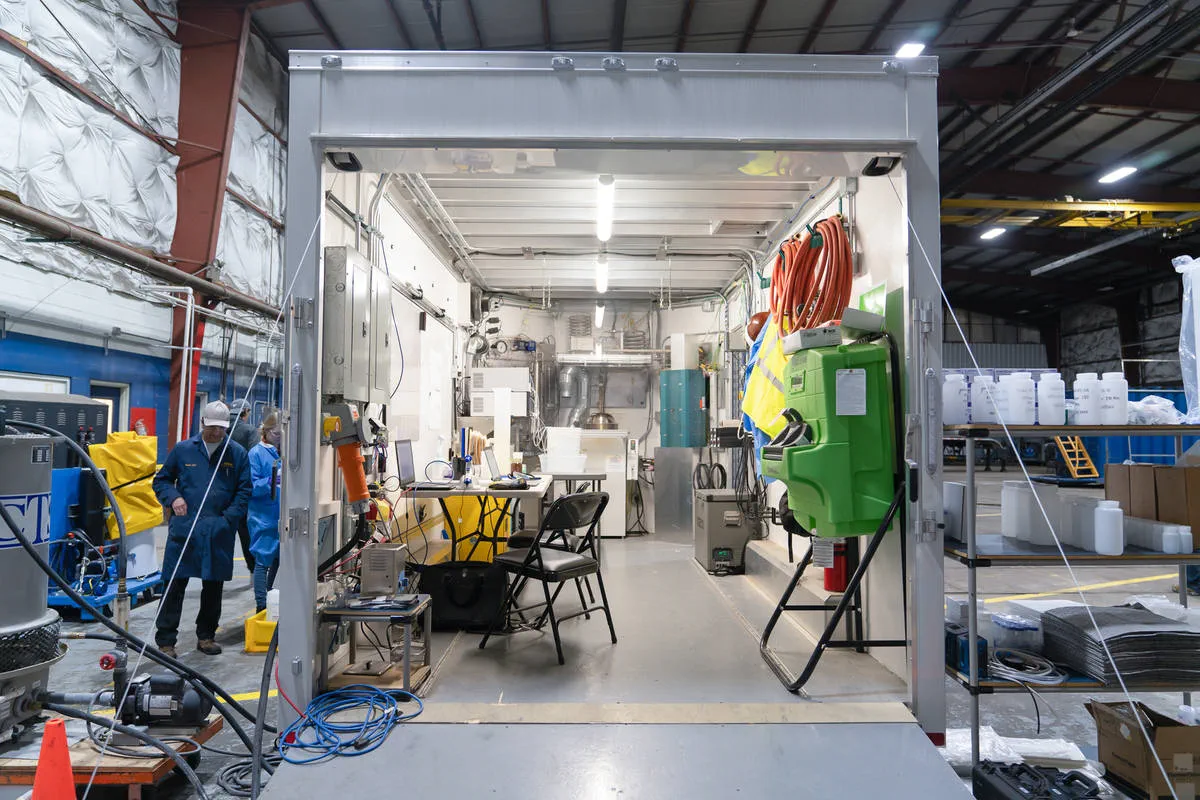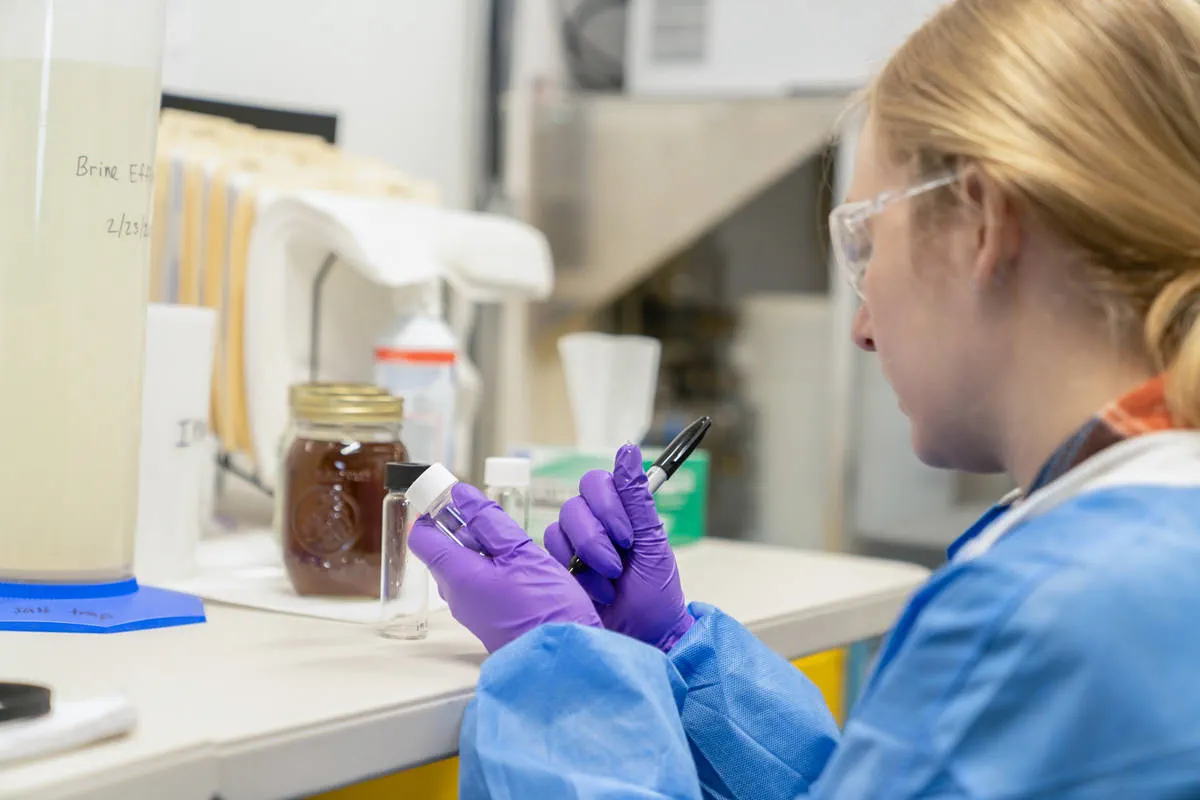PFAS - tough to destroy but could its time be up? Aquatech Online looks at a new mobile treatment development from Battelle.
Battelle-ing PFAS
Per- and Polyfluoroalkyl Substances (PFAS), otherwise known as “forever chemicals”, are one of the biggest challenges facing the water sector.
These harmful chemicals that do not break down and only accumulate over time are fast becoming a major issue for governments, with treatment solutions often ahead of regulations.
In 2021, the US Environmental Protection Agency (EPA) identified that PFAS is present in more than 120,000 US locations.
As with other water-based pollutants and contaminants, PFAS can be filtered out of water, but that only transfers the PFAS from one media to another. As a result, many solutions are now gearing towards how PFAS can be destroyed.
Independent not-for-profit research technology organisation, Battelle, recently demonstrated its PFAS Annihilator™ Destruction Technology at a wastewater treatment plant in Michigan.
A closed-loop on-site destruction solution powered by supercritical water oxidation, the system demonstrated its capability to mobilise and destroy PFAS chemicals that were present in the contaminated water.

Speaking to Aquatech Online, Amy Dindal, PFAS program manager, said: "The core is based on supercritical water oxidation which is a technology that's been in practice since the 80s to deal with difficult to treat compounds.
"The technology involves increasing the temperature and the pressure so that it's in a unique state. That will enable the breaking of the carbon-fluorine bond, which is the backbone of the molecules and with that, we add oxidation agents."
From the demonstration in Michigan, Battelle showed it was able to reduce the total PFAS in landfill leachate to single-digit concentrations without creating any adverse by-products in the treated water.
PFAS destruction on the go
At the demonstration, Battelle took the solution to the problem.
"We're flexible," said Dindal. “The reason we put our demonstration unit on a mobile platform was that we wanted to go to the waste and treat the issue without it having to cross state or national lines."
Mobile water treatment is increasing in popularity in the sector, and Battelle is keen to offer its PFAS solution in a variety of ways.

"We're not just highly confident, we're doing it, we can scale on a mobile platform to the size of a tractor-trailer,” she adds.
“The reason we put our demonstration unit on a mobile platform was that we wanted to go to the waste and treat the issue without it having to cross state or national lines."
While this was just the first version of the technology, the next iteration of the PFAS Annihilator Mobile Unit is currently under construction.
Battelle's focus is on increasing the capacity for wastewater intake and treatment, as well as automating the process so units can operate without manual intervention.
A supercritical solution
Supercritical water oxidation, as Dindal says, has been around since the 1980s.
First proposed by MIT, essentially supercritical water oxidation is an advanced oxidation technology that can be used to destruct organic matters by taking advantage of the unique properties of supercritical water under the typical operating conditions of 450–600°C.
“The same properties that make PFAS so useful also make them very difficult to remove from the environment and our bodies, as they resist heat, oil, stains, grease and water and are temperature resistant and reduce friction,” says the PFAS program manager.
“There are more than 5,000 different versions of PFAS, making every contamination different. This new technology will do incredible things for addressing PFAS water contamination.”
“The same properties that make PFAS so useful also make them very difficult to remove from the environment and our bodies.”
To break down these complex chemicals, the solution’s pumps draw the contaminated wastewater into the system, where it is mixed with hydrogen peroxide, isopropanol as a co-fuel and sodium hydroxide as a neutralizing agent.
After passing through a heat exchanger and removing salts, the water goes into the reactor at a designed temperature and pressure with an oxidant to break the carbon-fluorine bond.
The resulting output is carbon dioxide and hydrofluoric acid, which is neutralized with sodium hydroxide, turning it into inert salts. This solution eliminates any harmful by-products.
In its trials of more than 30 PFAS-contaminated sample types, Battelle says the Annihilator consistently showed more than 99.99 percent destruction of total PFAS.
Red tape
Of course, being able to destroy the PFAS is just one part of the battle.
PFAS has been in legislative limbo for a long time. Currently, in the US, there are no federal policies that protect US citizens from the negative impact of PFAS.
Back in July 2021, Congress passed a bill that would see the EPA enact limits on PFAS chemicals in drinking water and declare them hazardous substances.
Speaking to Aquatech Online at the time, the Water Quality Association said: "Many states have adopted broader and stricter requirements when it comes to PFAS regulations."
"I think that the US government has begun to be more clear about its intentions and future thinking with these roadmaps.”
But what more can the US government do?
"I think that the US government has begun to be more clear about its intentions and future thinking with these roadmaps. For example, the Department of Defense put out a moratorium on the incineration of all AFFF [aqueous film forming foam] and other PFAS related materials.
"The guidance that comes out is helpful for us as the technology being implemented ensures we are being aligned with the future needs and also provides an opportunity for us to demonstrate this technology and have it accepted through third-party testing."
While the fight against PFAS is certainly not won, infact, you could say it has yet to get going.
Yet, Battelle's Annihilator is certainly a good weapon to have in the arsenal and is making a problem that initially seemed impossible to combat, have one potential answer.
Related content
- New study finds water leaving plants contains more PFAS
- PFAS certification in the US: The lay of the land
- Tech dive: the point of use systems taking on PFAS







